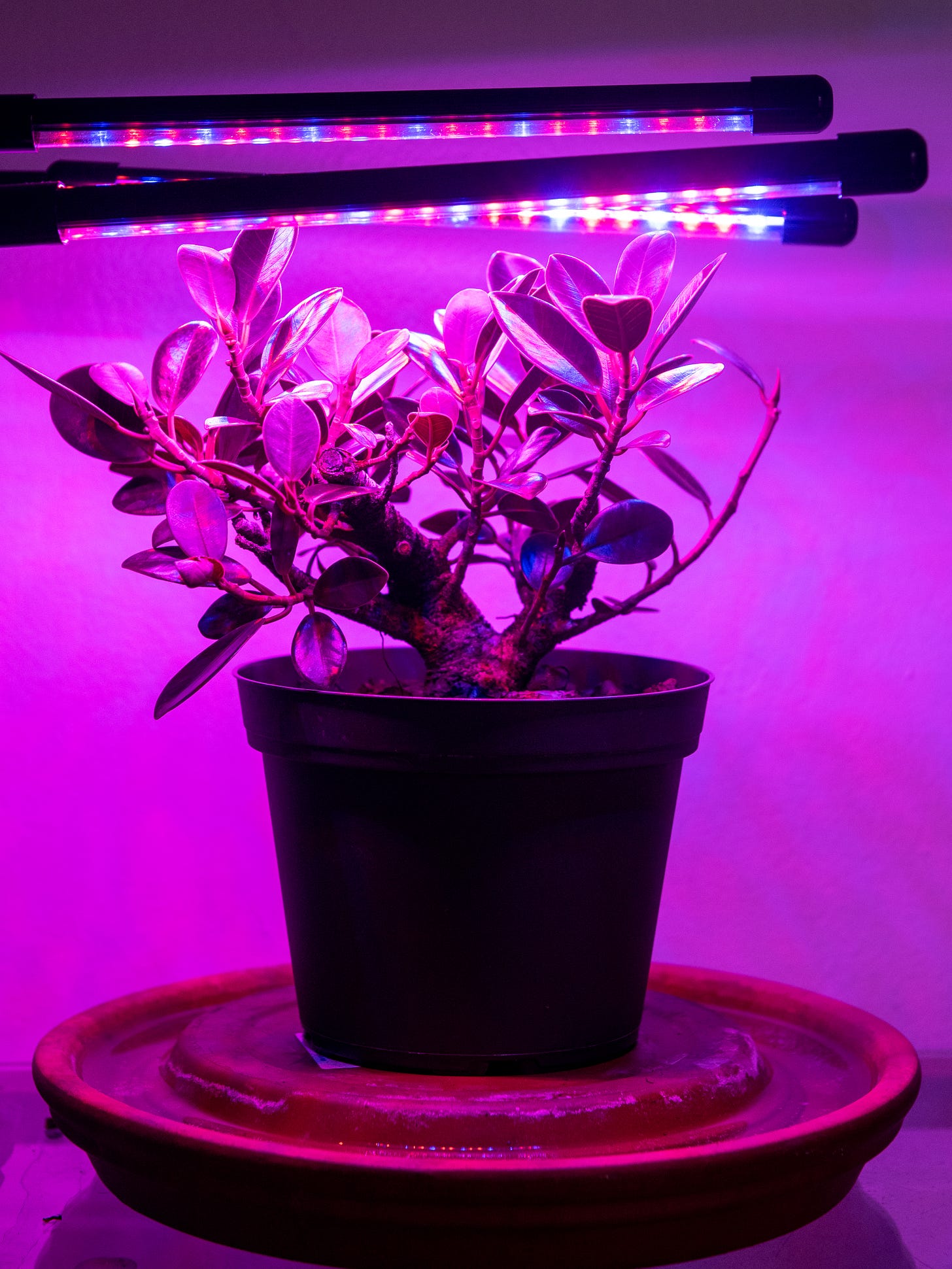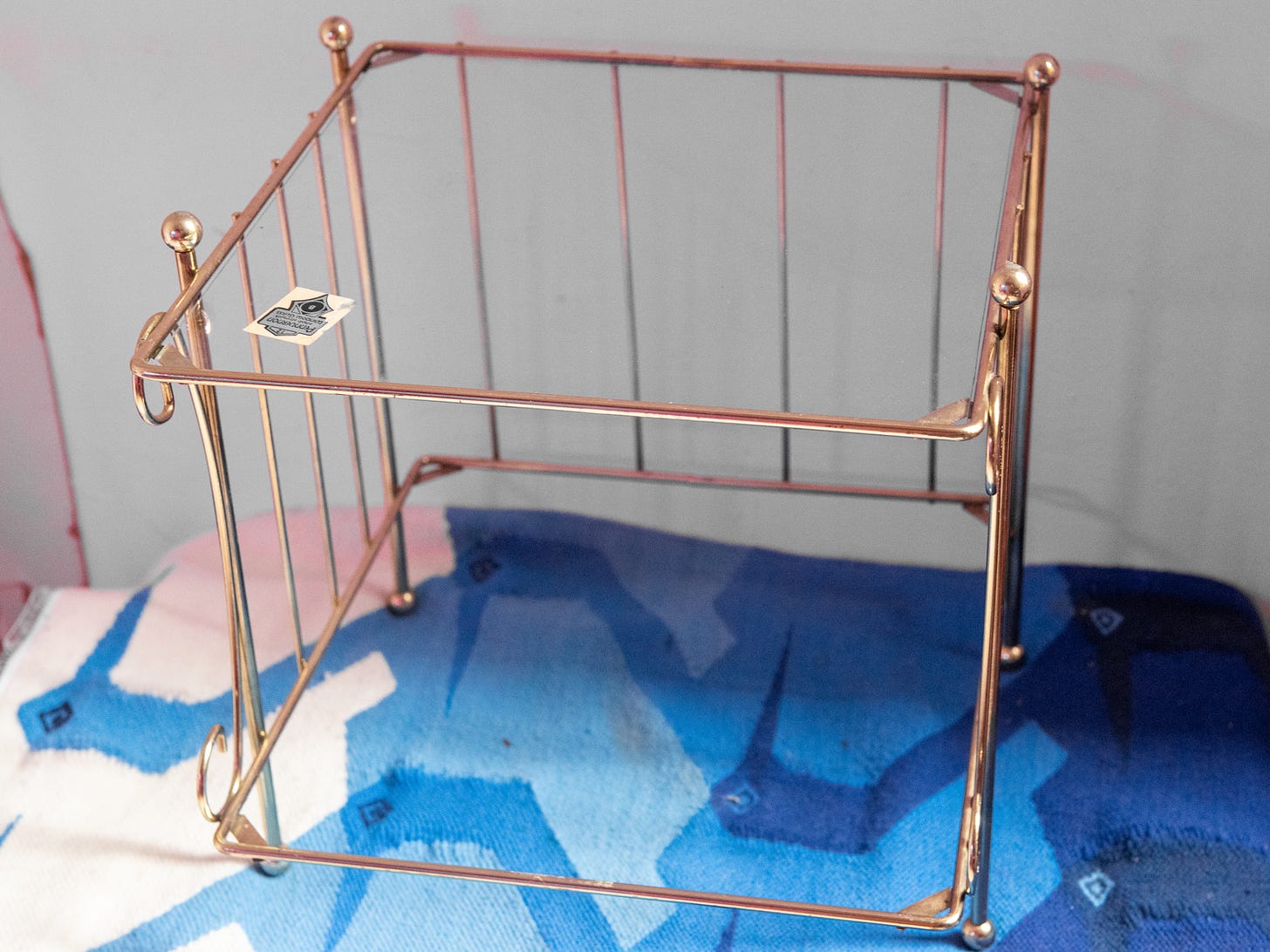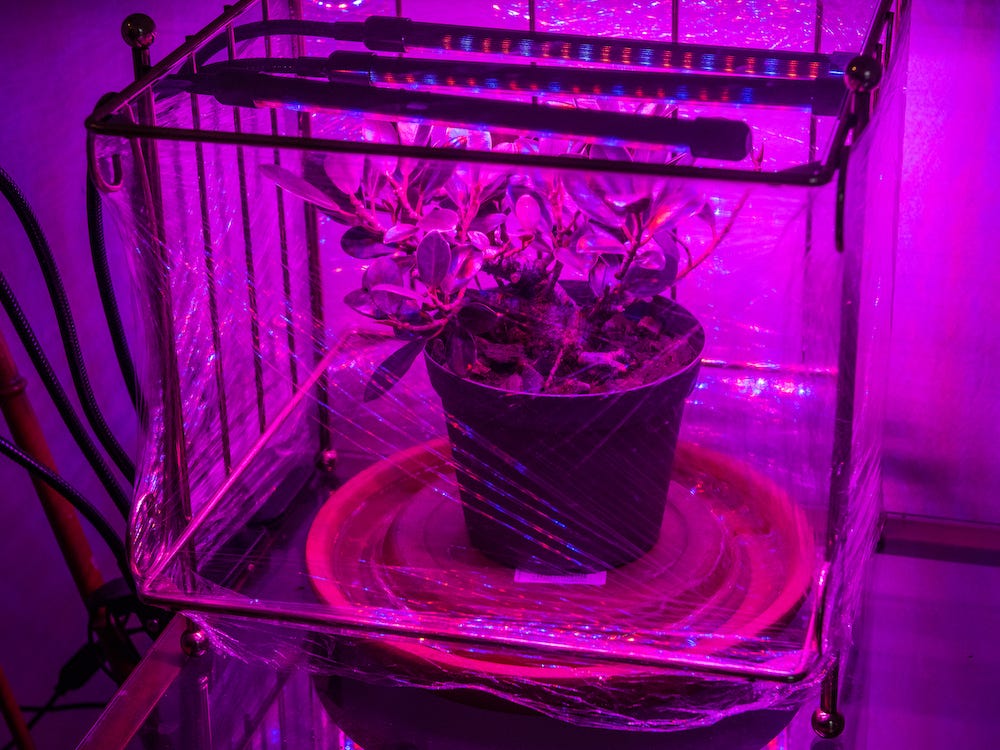If you grow anything indoors you have to think about humidity. This is especially the case for trees, which really want higher humidity than a typical home provides. My ficus microcarpa is native to subtropical China. Much to the detriment of the puer tea I’m aging, my apartment is considerably cooler and drier than that.
A lot of houseplant dealers will suggest misting your plant or placing it on a humidity tray like I’ve set up above. These are great suggestions for the houseplant dealers, because the average houseplant buyer doesn’t have or need much horticultural knowledge, so dealers can get away with all kinds of bullshit that does nothing, but suggests in a non-quantifiable way that there was something you could have done to save your plant from a dessicated demise.
In truth, misting will raise the humidity around your plant for about five minutes while the water evaporates, then you’re back to dry. Humidity trays don’t release enough vapor to make a meaningful difference either.
The typical solution is to buy a humidifier, which is certainly sensible, but I don’t relish the idea of burning dinosaurs to make mist. I’ve barely accepted that I’m using fossil fuels to recreate the sun with my grow lights. Isn’t bonsai supposed to make you work with nature? Instead I’ve been dreaming up designs for a kitchen table greenhouse. Why pay to create moisture when I can capture and condense what’s already in my apartment for free?
There are small kits I can buy for this sort of thing, or I could treat myself to a giant bell jar or terrarium for upwards of $80 on the low end. But ballooning puer tea collection notwithstanding, I really am a cheapskate. Can’t I DIY this? Some acrylic panels and a hot glue gun would do the trick. I also considered wrapping plastic around a woven dome of wire.
Over the weekend I found this chic grannie caddy at a community tag sale in my neighborhood. Not five minutes earlier, I stumbled across a humidifier for 14 bucks that gave me serious reason to rethink my anti-electricity stance. Surely if I buy the machine used I won’t have to burn that many dinosaurs to get my humidity. I’m so angry at myself for this kind of ninnying which does nothing but take up headspace better used for yelling at the government.
This caddy, though, was perfect, and perfectly priced at $5. It’s actually better than anything I could have constructed or dreamed up. There’s a wide open side for viewing and three sides lined with crossbars to support a plastic wrapping. The removable glass lid gives me easy access to the inside of the greenhouse for when I need to water or prune. No matter your greenhouse design, it’s important to air it out regularly so it doesn’t get too humid, which can lead to fungal problems. (I may wind up adding a small electric fan to my setup; certainly a battery powered hygrometer to measure temperature and relative humidity at all times.)
All it needed was a tight wrapping in several feet of plasticized dinosaur film, and voila, a cheapskate’s greenhouse. The grow lights sit just under the glass and run for 18 hours a day with a nifty timer. The humidity inside isn’t what I’d call “tropical” but it’s better than before. I’ll have to watch the tree and see how the setup plays out.
You may notice I still have the humidity tray in the greenhouse. Yes, I should know better. But I can’t quite shake the superstition.
Tree reading
Loosely about trees, I have a feature on climate change and the cocktail world in the latest issue of Imbibe. In it I propose four new Rs with sharper teeth than our current “reduce, reuse, recycle.” The fourth R is revolution. (^_^) [Imbibe]
The documentary Fantastic Fungi is now on Netflix. Have you gotten high and watched it yet? [Youtube]




While water-only humidity trays are pretty much useless, saturated salt trays are not! The rH over a box of kosher salt and water in a closed container is 75% over a pretty consistent temperature range. https://www.engineeringtoolbox.com/salt-humidity-d_1887.html (Photographers use this trick to keep paper moist for hand-applied emulsions.) Other salts can get the rH even higher, but salt is easy to come by. And because the salt concentration is insanely high, nothing will ever grow in it, so you can pretty much use the same tray forever.